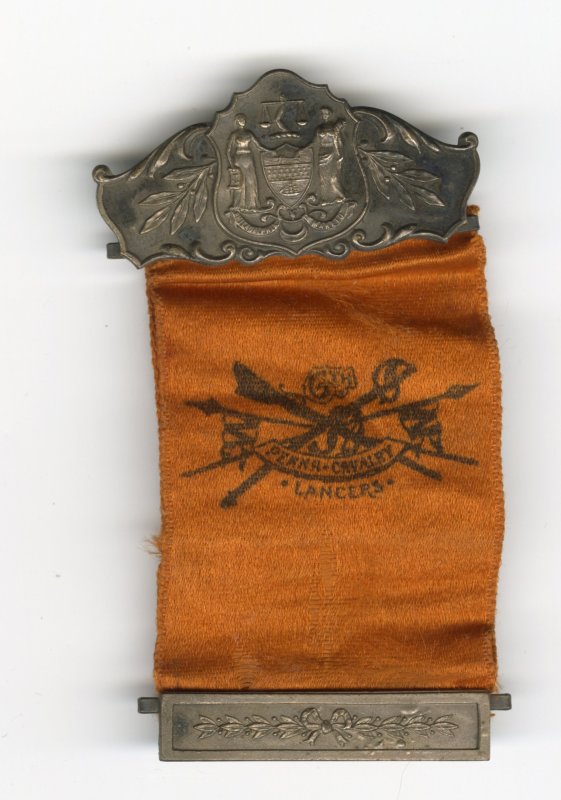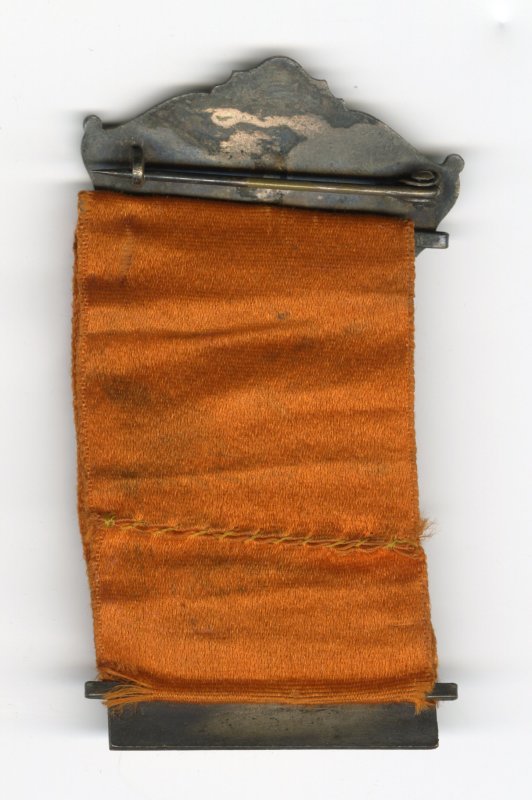6th Pennsylvania Cavalry - Rush's Lancers
Item GAR-10435
Price: $575.00
Description
6th Pennsylvania Cavalry - Rush's Lancers. Very rare Rush's Lancers Association Badge/Ribbon with original clasp intact.The 6th Pennsylvania Cavalry was a Union Army cavalry regiment that served in the Army of the Potomac and the Army of the Shenandoah during the American Civil War. It was formed in 1861 as the Philadelphia Light Cavalry and the 70th Regiment of the Pennsylvania Volunteers by Richard H. Rush who also served as colonel from 1861 to 1862. At the request of Major General George B. McClellan, the regiment was equipped with lances which prompted the unit to be known as "Rush's Lancers." The lances proved ineffective in battle and the regiment was issued carbine rifles in 1863. The regiment served in many of the key battles in the Eastern theater of the American Civil War and were mustered out in August 1865.
In May 1863, the regiment retired their lances and were rearmed with Sharps carbines. The lances were ridiculed as "turkey drivers" and were ineffective in close combat. The regiment was assigned to the Reserve Brigade of the 1st Cavalry Division under Brigadier General John Buford and fought in the Battle of Brandy Station in June 1863. The regiment led the unsuccessful charge (followed closely by the 6th Cavalry Regiment) against the guns at St. James Church. The regiment overran the confederate guns but were repulsed by the troops of Brigadier General William E. Jones. Several Confederates later described the 6th's charge as the most "brilliant and glorious" cavalry charge of the war. (In many Civil War battles, cavalrymen typically dismounted once they reached an engagement and fought essentially as infantry. But in this battle, the surprise and chaos led to a mostly mounted fight.) The hard fighting at the battle forced Confederate officers to state that "Brandy Station made the Federal Cavalry".
The regiment arrived at the Battle of Gettysburg at night on July 2, 1863. They fought dismounted on July 3rd and lost 12 men in the battle.
[Source: Wikipedia]


